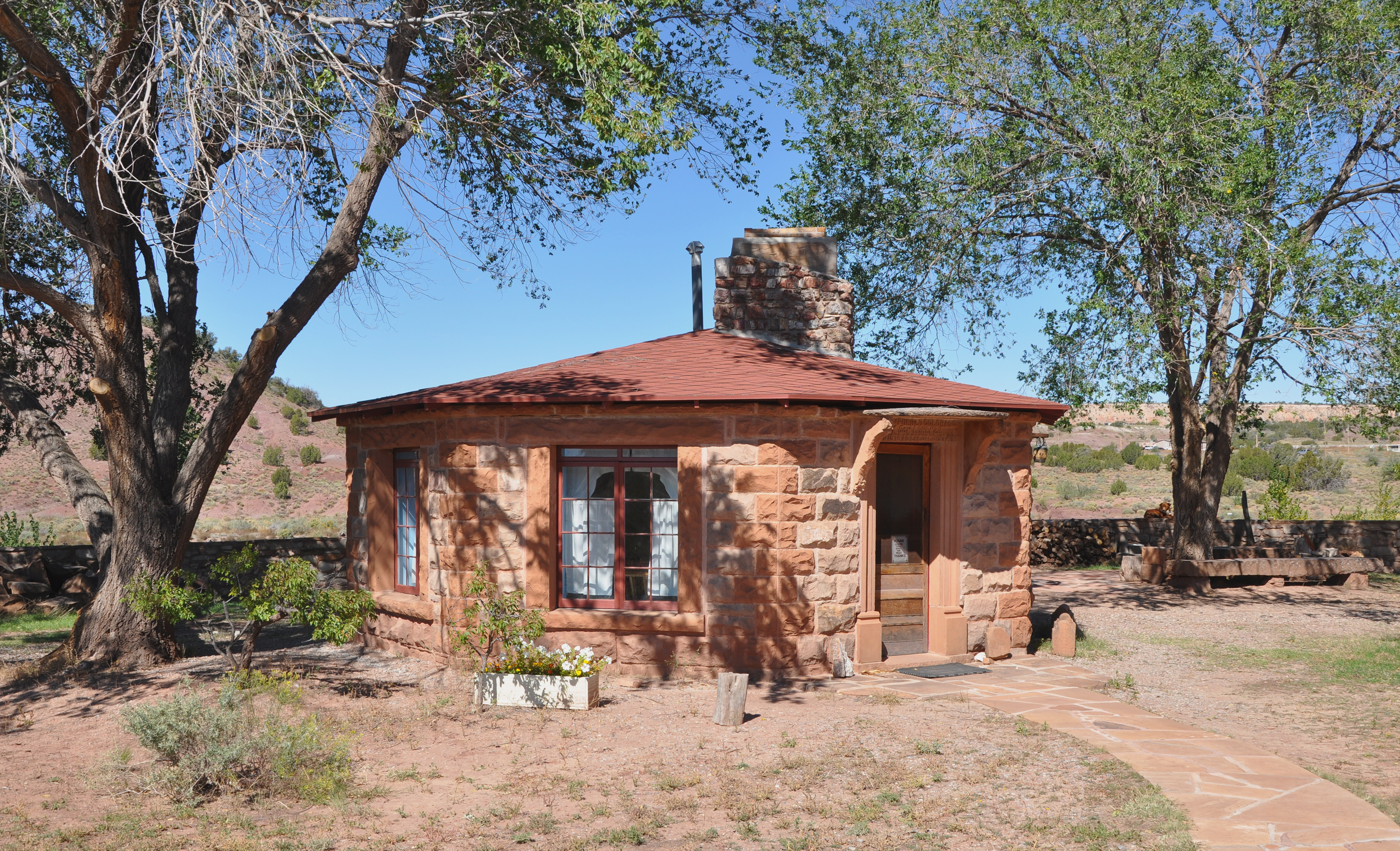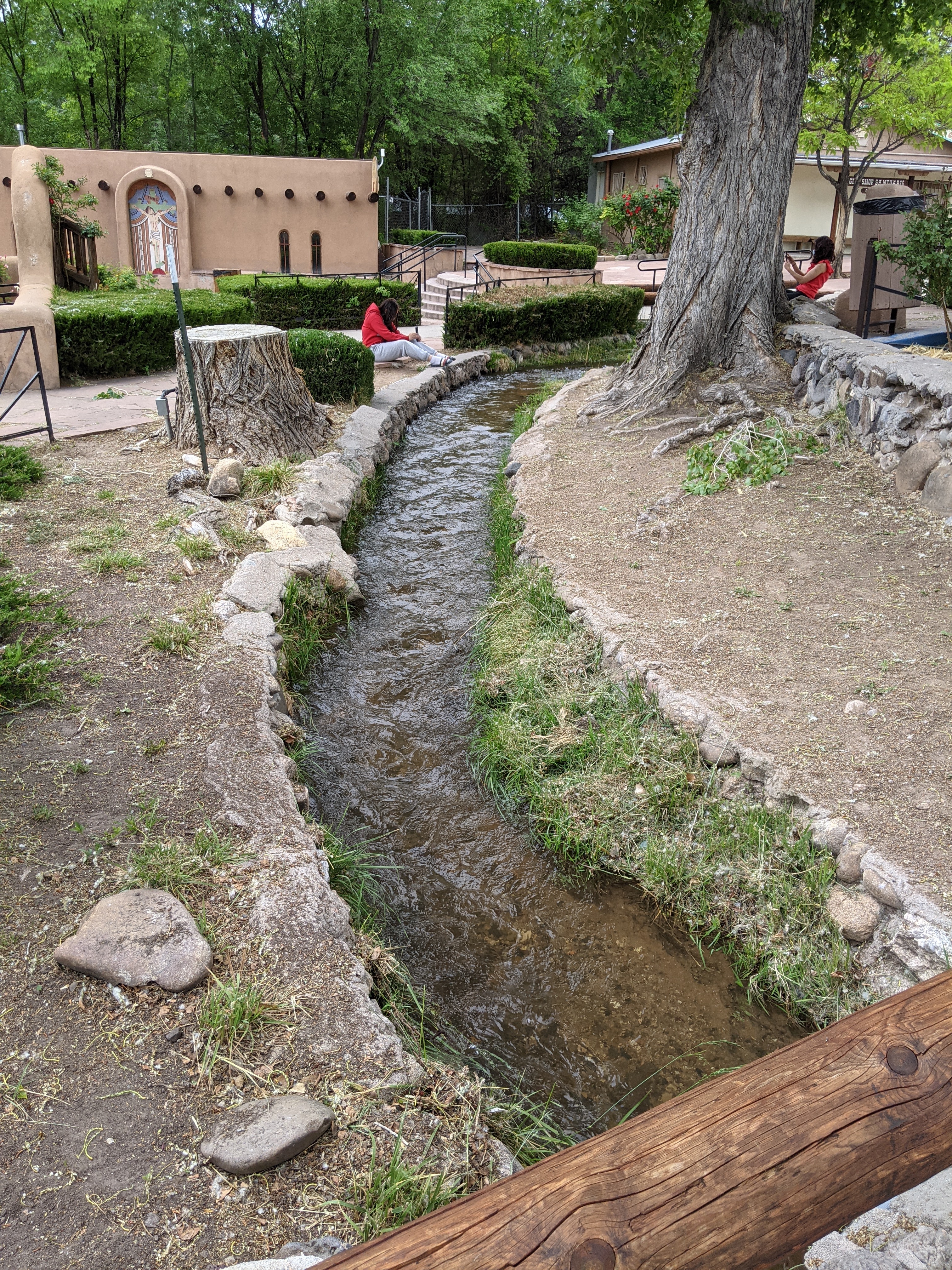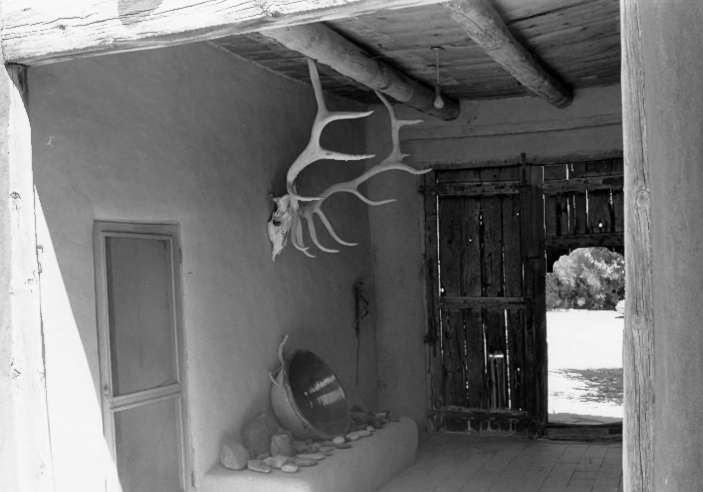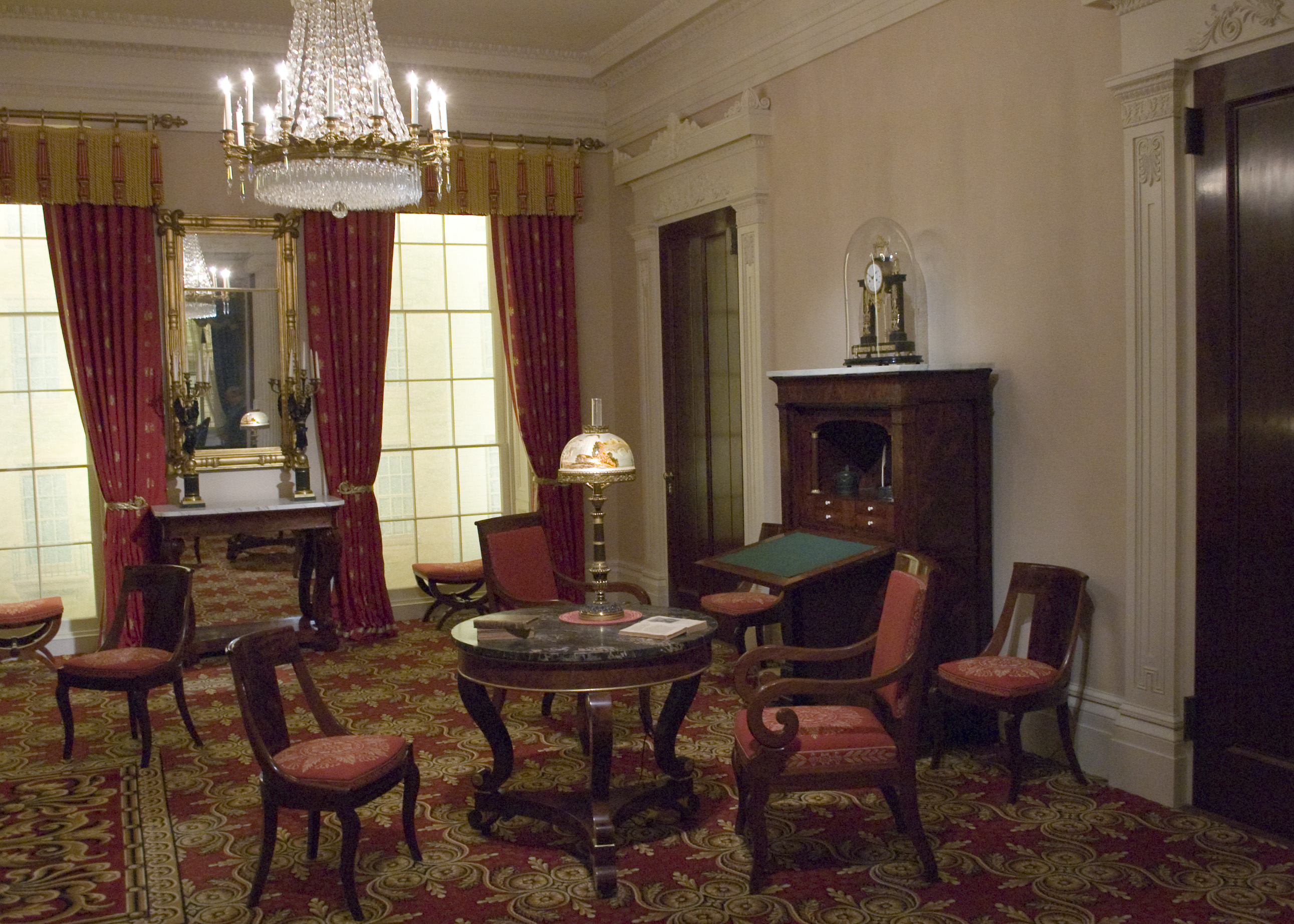|
Gutiérrez Hubbell House
The Gutiérrez Hubbell House also known as the James Lawrence and Juliana Gutierrez y Chavez Hubbell House, is a historic territorial-style ''hacienda.'' The original house dates back to the 1820s, and was enlarged in the 1850s and 1860s. It is located in the village of Pajarito in the South Valley of Albuquerque, New Mexico. The house has existed under three national flags: Spain, Mexico and the United States. The house is listed on the State of New Mexico Register of Cultural Properties as a symbol of the blending of Spanish, Native American and Anglo cultures and traditions, and is also listed on the National Register of Historic Places. It is managed by the National Park Service. History The property originally consisted of a 40,000 acre estate owned by Clemente and Josefa Gutiérrez who willed it to their great-granddaughter, Julianita. Sometime later, Julianita married James Lawrence "Santiago" Hubbell in 1849. The Gutiérrez family was a prominent ranching and trading ... [...More Info...] [...Related Items...] OR: [Wikipedia] [Google] [Baidu] |
Albuquerque, New Mexico
Albuquerque ( ; ), ; kee, Arawageeki; tow, Vakêêke; zun, Alo:ke:k'ya; apj, Gołgéeki'yé. abbreviated ABQ, is the most populous city in the U.S. state of New Mexico. Its nicknames, The Duke City and Burque, both reference its founding in 1706 as ''La Villa de Alburquerque'' by Nuevo México governor Francisco Cuervo y Valdés''.'' Named in honor of the Viceroy of New Spain, the Francisco Fernández de la Cueva, 10th Duke of Alburquerque, 10th Duke of Alburquerque, the city was Old Town Albuquerque, an outpost on Camino Real de Tierra Adentro, El Camino Real linking Mexico City to the northernmost territories of New Spain. Located in the Albuquerque Basin, the city is flanked by the Sandia Mountains to the east and the West Mesa to the west, with the Rio Grande and bosque flowing from north-to-south. According to the 2020 United States census, 2020 census, Albuquerque had 564,559 residents, making it the List of United States cities by population, 32nd-most populous city ... [...More Info...] [...Related Items...] OR: [Wikipedia] [Google] [Baidu] |
Ganado, Arizona
Ganado ( nv, ) is a chapter of the Navajo Nation and census-designated place (CDP) in Apache County, Arizona, United States. The population was 1,210 at the 2010 census. Ganado is part of the Fort Defiance Agency, of the Bureau of Indian Affairs; and is the delegate seat for the district that encompasses the Jeddito, Cornfields, Ganado, Kinlichee, Steamboat communities at the Navajo Nation Council. The Hubbell Trading Post National Historic Site in Ganado is maintained as an example of a 19th-century trading post. Geography Ganado is located at (35.702571, −109.553234). According to the United States Census Bureau, the CDP has a total area of , all land. The greater Ganado area includes Ganado, Burnside, Cornfields, Kinlichee, Wood Springs, Klagetoh, and Steamboat and the family ranches dispersed amongst these sub-areas. Climate According to the Köppen Climate Classification system, Ganado has a semi-arid climate, abbreviated "BSk" on climate maps. Demographics A ... [...More Info...] [...Related Items...] OR: [Wikipedia] [Google] [Baidu] |
National Register Of Historic Places In Albuquerque, New Mexico
National may refer to: Common uses * Nation or country ** Nationality – a ''national'' is a person who is subject to a nation, regardless of whether the person has full rights as a citizen Places in the United States * National, Maryland, census-designated place * National, Nevada, ghost town * National, Utah, ghost town * National, West Virginia, unincorporated community Commerce * National (brand), a brand name of electronic goods from Panasonic * National Benzole (or simply known as National), former petrol station chain in the UK, merged with BP * National Car Rental, an American rental car company * National Energy Systems, a former name of Eco Marine Power * National Entertainment Commission, a former name of the Media Rating Council * National Motor Vehicle Company, Indianapolis, Indiana, USA 1900-1924 * National Supermarkets, a defunct American grocery store chain * National String Instrument Corporation, a guitar company formed to manufacture the first resonator gui ... [...More Info...] [...Related Items...] OR: [Wikipedia] [Google] [Baidu] |
Acequia
An acequia () or séquia () is a community-operated watercourse used in Spain and former Spanish colonies in the Americas for irrigation. Particularly in Spain, the Andes, northern Mexico, and the modern-day American Southwest particularly northern New Mexico and southern Colorado, acequias are usually historically engineered canals that carry snow runoff or river water to distant fields. Examples of acequias in New Mexico have lengthy historical roots to Pueblo and Hispano communities, and they are incorporated into traditions including the matachines, life in the Rio Grande Bosque of the Albuquerque metropolitan area, and pilgrimages to El Santuario de Chimayo. The term can also refer to the long central pool in a Moorish garden, such as the Generalife in the Alhambra in Southern Iberia. Overview The Spanish word (and Catalan ) comes from Classical Arabic , which has the double meaning of 'the water conduit' or 'one that bears water' and the 'barmaid' (from , 'to g ... [...More Info...] [...Related Items...] OR: [Wikipedia] [Google] [Baidu] |
National Trust For Historic Preservation
The National Trust for Historic Preservation is a privately funded, nonprofit organization based in Washington, D.C., that works in the field of historic preservation in the United States. The member-supported organization was founded in 1949 by congressional charter to support the preservation of America’s diverse historic buildings, neighborhoods, and heritage through its programs, resources, and advocacy. Overview The National Trust for Historic Preservation aims to empower local preservationists by providing leadership to save and revitalize America's historic places, and by working on both national policies as well as local preservation campaigns through its network of field offices and preservation partners, including the National Park Service, State Historic Preservation Offices, and local preservation groups. The National Trust is headquartered in Washington, D.C., with field offices in Atlanta, Chicago, Houston, Denver, New York City, Los Angeles, San Francisco, an ... [...More Info...] [...Related Items...] OR: [Wikipedia] [Google] [Baidu] |
Zaguan
Zaguan refers to a house plan configuration where a central passageway leads from a front door to a patio or a courtyard. This is found in historic houses in Mexico and in the southwestern U.S. Usually rooms are one deep, with each facing the street or the courtyard. "Zaguan" may properly refer to the passageway, but sometimes refers to the complex as a whole. A zaguán is a space immediately before, or behind the front door of a house or palace that serves as a vestibule to the main entrance. It is often covered, but otherwise open to the elements, and provides direct access from the street to the central courtyard beyond. Being partly outdoors, and at street level, it is frequently used like a mud room, and to stow carriages or cars, or access the service area without going through the house. The zaguán is common, especially in traditional houses and other buildings, throughout Spain and all Hispanic countries. The word comes from the Arabic "istawán" or "usṭuwān h" Exam ... [...More Info...] [...Related Items...] OR: [Wikipedia] [Google] [Baidu] |
Parlor
A parlour (or parlor) is a reception room or public space. In medieval Christian Europe, the "outer parlour" was the room where the monks or nuns conducted business with those outside the monastery and the "inner parlour" was used for necessary conversation between resident members. In the English-speaking world of the 18th and 19th century, having a parlour room was evidence of social status. Etymology In the early 13th century, parlor originally referred to a room where monks could go to talk, derived from the Old French word ''parloir'' or ''parler'' ("to speak"), it entered the English language around the turn of the 16th century. History The first known use of the word to denote a room was in medieval Christian Europe, when it designated the two rooms in a monastery where clergy, constrained by vow or regulation from speaking otherwise in the cloister, were allowed to converse without disturbing their fellows. The "outer parlour" was the room where the monks or nuns c ... [...More Info...] [...Related Items...] OR: [Wikipedia] [Google] [Baidu] |
Niche (architecture)
A niche (CanE, or ) in Classical architecture is an exedra or an apse that has been reduced in size, retaining the half-dome heading usual for an apse. Nero's Domus Aurea (AD 64–69) was the first semi-private dwelling that possessed rooms that were given richly varied floor plans, shaped with niches and exedrae; sheathed in dazzling polished white marble, such curved surfaces concentrated or dispersed the daylight. A is a very shallow niche, usually too shallow to contain statues, and may resemble a blind window (a window without openings) or sealed door. (Compare: blind arcade) The word derives from the Latin (), via the French . The Italian '' nicchio'' () may also be involved,OED, "Niche" as the traditional decoration for the top of a niche is a scallop shell, as in the illustration, hence also the alternative term of "conch" for a semi-dome, usually reserved for larger exedra. In Gothic architecture, a niche may be set within a tabernacle framing, like a richly de ... [...More Info...] [...Related Items...] OR: [Wikipedia] [Google] [Baidu] |
Transom (architecture)
In architecture, a transom is a transverse horizontal structural beam or bar, or a crosspiece separating a door from a window above it. This contrasts with a mullion, a vertical structural member. Transom or transom window is also the customary U.S. word used for a transom light, the window over this crosspiece. In Britain, the transom light is usually referred to as a fanlight, often with a semi-circular shape, especially when the window is segmented like the slats of a folding hand fan. A prominent example of this is at the main entrance of 10 Downing Street, the official residence of the British prime minister. History In early Gothic ecclesiastical work, transoms are found only in belfry unglazed windows or spire lights, where they were deemed necessary to strengthen the mullions in the absence of the iron stay bars, which in glazed windows served a similar purpose. In the later Gothic, and more especially the Perpendicular Period, the introduction of transoms became common i ... [...More Info...] [...Related Items...] OR: [Wikipedia] [Google] [Baidu] |
Salon (gathering)
A salon is a gathering of people held by an inspiring host. During the gathering they amuse one another and increase their knowledge through conversation. These gatherings often consciously followed Horace's definition of the aims of poetry, "either to please or to educate" (Latin: ''aut delectare aut prodesse''). Salons in the tradition of the French literary and philosophical movements of the 17th and 18th centuries were carried on until as recently as the 1920s in urban settings. Historical background The salon was an Italian invention of the 16th century, which flourished in France throughout the 17th and 18th centuries. The salon continued to flourish in Italy throughout the 19th century. In 16th-century Italy, some brilliant circles formed in the smaller courts which resembled salons, often galvanized by the presence of a beautiful and educated patroness such as Berta Zuckerkandl, Isabella d'Este or Elisabetta Gonzaga. Salons were an important place for the exchange of i ... [...More Info...] [...Related Items...] OR: [Wikipedia] [Google] [Baidu] |
Greek Revival
The Greek Revival was an architectural movement which began in the middle of the 18th century but which particularly flourished in the late 18th and early 19th centuries, predominantly in northern Europe and the United States and Canada, but also in Greece itself following independence in 1832. It revived many aspects of the forms and styles of ancient Greek architecture, in particular the Greek temple, with varying degrees of thoroughness and consistency. A product of Hellenism, it may be looked upon as the last phase in the development of Neoclassical architecture, which had for long mainly drawn from Roman architecture. The term was first used by Charles Robert Cockerell in a lecture he gave as Professor of Architecture to the Royal Academy of Arts, London in 1842. With a newfound access to Greece and Turkey, or initially to the books produced by the few who had visited the sites, archaeologist-architects of the period studied the Doric and Ionic orders. Despite its uni ... [...More Info...] [...Related Items...] OR: [Wikipedia] [Google] [Baidu] |

.png)





.jpg)

